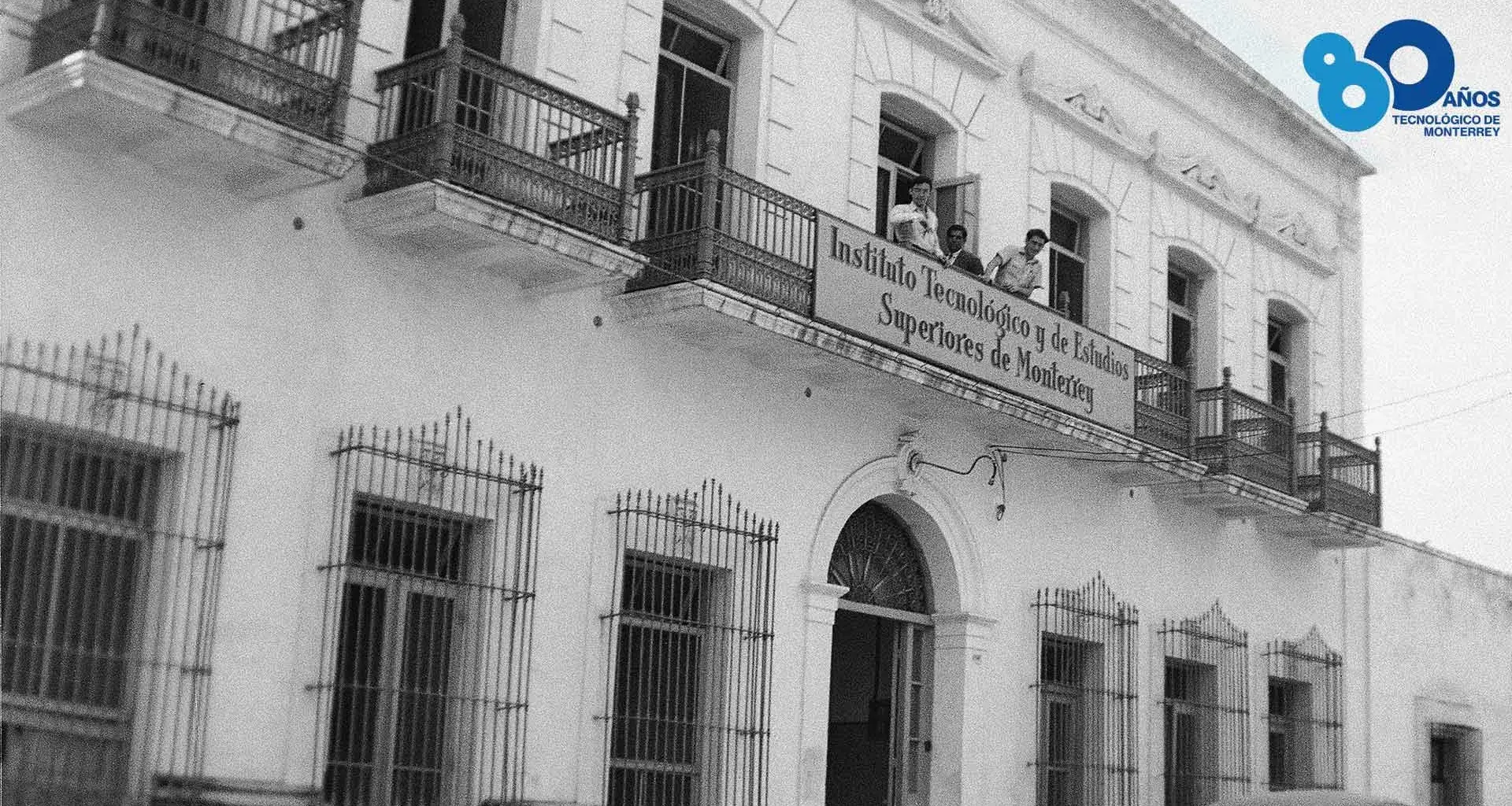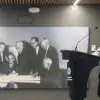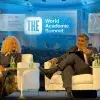It is Monday, September 6, 1943. The clock in the Monterrey cathedral marks 8 o’clock in the morning. Two hundred and twenty-seven young people of various ages converge in the heart of Monterrey. They arrive from various neighborhoods, passing through Plaza Zaragoza, the growing city’s large square.
The mansion at number 858 Abasolo Street would be the home of an academic project with a unique beginning within Mexican higher education.
According to historian Rodrigo Mendirichaga, there was a half-circle arch over the entrance gate that read: Instituto Tecnológico y de Estudios Superiores de Monterrey (Monterrey Institute of Technology and Higher Education).
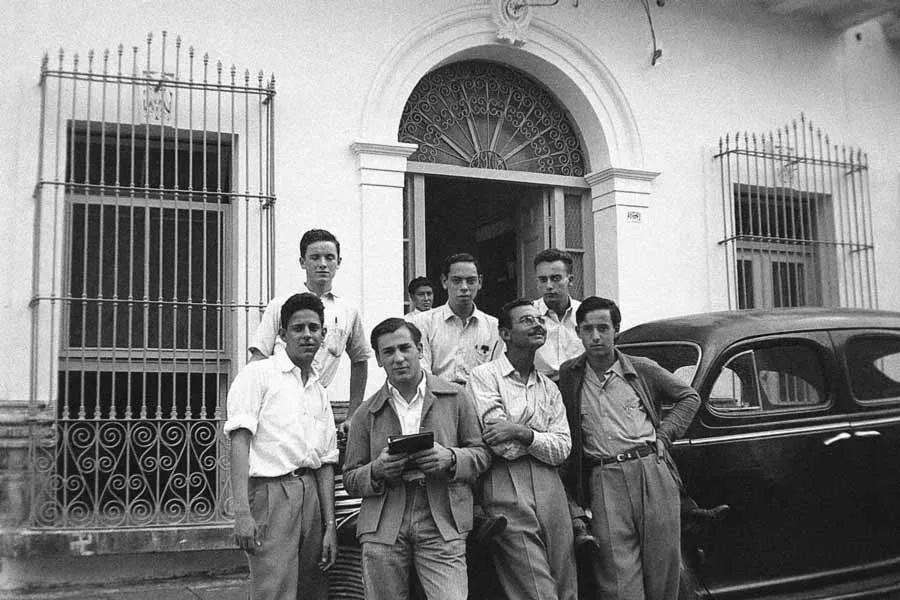
Tec makes news
A small group of students, out of a population of about 200,000, enrolled at the Monterrey Institute of Technology and Higher Education, marking a modest beginning for this new educational institution. Although the number of registered students was small, news of its existence spread quickly through their networks of family and friends.
While the first students were beginning their activities at the Institute, thousands of Monterrey residents learned of the genesis of this institution through extensive coverage in the morning newspapers “El Porvenir” and “El Norte.”
The first of these published a special supplement with four pages full of information about Tec de Monterrey, including congratulatory remarks from prominent figures. Among these congratulations was a particularly significant one, that of the Rector of the UNAM, Rodolfo Brito Foucher, who recognized the importance of this new educational project.
The first Tec classes
“They told us that classes would begin on Monday, September 6 at 8:00 a.m.,” says Librado Rosales Ramos, one of the first students at the Tec. However, many with experience of other educational institutions had their doubts.
“At the appointed time on the appointed day, mathematics teacher Remigio Valdés Gámez (†) was already there waiting for us at the desk in the classroom.”
Classes started as planned!
“I arrived that day with a lot of enthusiasm because the idea was to raise the level of higher education in Nuevo León,” Professor Valdés recalled.
With 350 students and 14 professors, this was the formal start of the Tec’s academic work in a Monterrey mansion, with the intention of providing talent to industry in Mexico.
The spacious halls with high ceilings and large iron-framed windows that bathed the room in light housed the High School, Accounting, Engineering, and Technical schools.
Young people from different parts of the country come to the city of Monterrey to study at the new Tec. There were also teachers joining the educational project. In the second semester, 33 teachers taught 452 students.
The large house was insufficient, so the School of Accounting occupied the third floor of the Nuevo León Bank.
The ideas and actions behind its foundation
In the 1940s, Monterrey began to stand out as an industrial power in Mexico. This industrial prosperity created a pressing need for a steady supply of highly skilled talent to meet the growing demands of local businesses.
In response to this urgent need, Eugenio Garza Sada, who was a director at the Cuauhtémoc Brewery at the time, brought together a group of business owners, managers, and industrial directors.
Together, they formed Enseñanza e Investigación Superior, A.C. (Civil Association of Higher Education and Research) in July 1943. This association was the driving force behind the establishment of Tecnológico de Monterrey, an institution destined to change higher education in Mexico.
Only two months after its formation, Tec de Monterrey began its educational activities in a building it rented for that purpose. This first building was the house located on Abasolo Street, a place that would become a landmark in the institution’s history.
Tec de Monterrey’s beginnings were marked by characteristics that were unusual in Mexico’s higher education landscape at the time. It introduced a semester term schedule, which meant a more agile adaptation to the needs of the industry and a focus on practical and applied training.
In addition, the concept of “tenured professors” became an institutional norm. These professors devoted their full time to preparing and teaching classes and were also involved in research and academic administration. This complete dedication to academic excellence contributed to establishing high educational standards at Tec de Monterrey from its earliest days.
“I taught classes in the mornings, and I organized math seminars in the afternoons. Little by little, this raised not only the level of my students, but also the level of the environment,” said Valdés, one of the first teachers at the nascent Tec.
Thus, Tec de Monterrey began its trajectory in a modest building on Abasolo Street, but with a vision and commitment that would lay the foundations for becoming one of the most influential and respected educational institutions in Latin America.
The origin of the name
Before the institution could take its first steps, there was a crucial question to answer: What would this new school be called?
“We need to decide on the name of the school,” said Eugenio Garza to his collaborators, engineer León Ávalos y Vez and Virgilio Garza, narrates Rodrigo Mendirichaga in his book: El Tecnológico de Monterrey, sucesos, anécdotas, personajes (Tecnológico de Monterrey: Events, Anecdotes, and Personalities).
Both agreed on the importance of including the word “technical” in the name since the institution would be a higher education institution. During several conversations, they considered the option of “Instituto de Estudios Técnicos Superiores” (Institute of Higher Technical Education).
But Eugenio, always in search of excellence, had a brilliant idea. He proposed that the new school be named after the city it was going to be established in: “Instituto Tecnológico de Monterrey” (Monterrey Institute of Technology). This suggestion was clearly inspired by MIT (Massachusetts Institute of Technology) without additions or embellishments.
However, Virgilio felt that something was missing. He argued that the institution would train not only technicians but also engineers, accountants, administrators, and other professionals. How could they reflect this breadth in the name?
Eugenio and his collaborators reflected on the humanist question. They recognized that the institution would also teach humanistic subjects such as philosophy, literature, art, and ethics in addition to technical training. It was a complete education that needed to be reflected in its name.
After intense discussion, Eugenio interrupted and proposed a solution that would encompass both the technological and humanistic dimensions of the institution. In quick strokes, he wrote: “Instituto Tecnológico y de Estudios Superiores de Monterrey” (Monterrey Institute of Technology and Higher Education). Reading it aloud, he felt it was the right name.
The new educational institution was ready to begin its activities and make a difference in the training of Mexican professionals. And, as a final touch to this story, Eugenio’s son had just been baptized, marking a new beginning both in his personal life and in the history of the institution he helped to found.
Inspired by MIT
“You tell me that it will be very expensive to set up an Institute like MIT in our country -as if I didn’t know that- but tell me if it isn’t more expensive for young people to lack quality options or to need to go elsewhere for training. To achieve this, we don’t need “deep pockets,” as they say. We need determined people who believe that education can accomplish anything, and believe it or not, there are those who do, at least in Monterrey,” Eugenio Garza Sada said to León Ávalos y Vez in 1943.
The idea of creating Tec de Monterrey arose thanks to the experience that Eugenio Garza Sada had as an engineering student at the Massachusetts Institute of Technology (MIT).
MIT’s educational model is primarily focused on industry. At that university, Eugenio Garza Sada took note of the quality of the professors, the infrastructure, and the extracurricular student programs.
His fascination started when he studied Civil Engineering and graduated in 1914. Many of the ideas he added to the Tec are based on his experience at MIT, such as the close connection between academia and industry and degrees that aim to solve real problems.
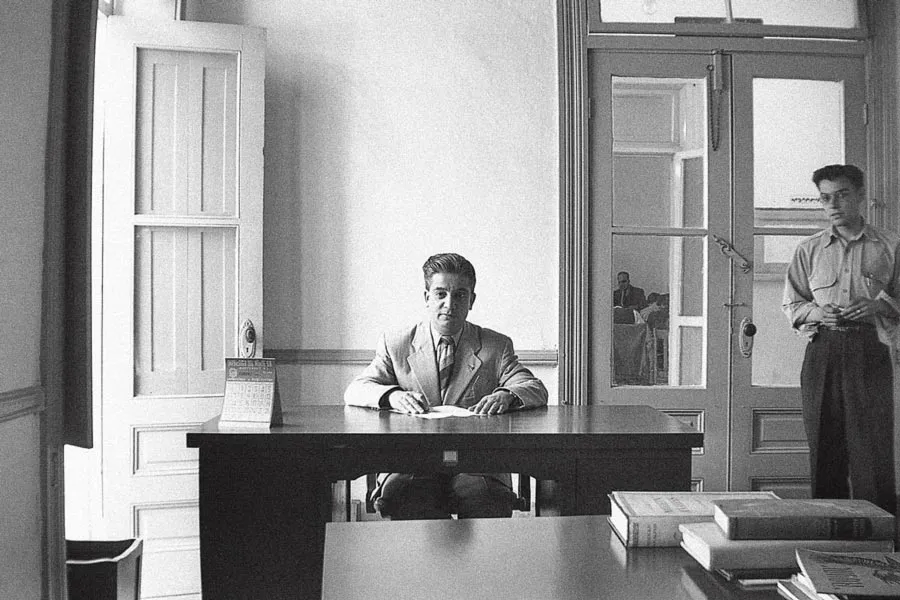
Leaving the house
Eugenio Garza Sada’s dream paid off, and two years after the Tec was founded, construction of Classroom Building 1 began on June 17 in downtown Monterrey. “It transformed a few years after I arrived at the mansion on Abasolo,” recalls Carlos Madero, who graduated as an electrical engineer in 1949.
The halls with high ceilings and large wooden doors were no longer the settings for their experiences, and their stories moved to new grounds in the south of the city.
“We left the Abasolo house and moved to a new building near a highway (today Eugenio Garza Sada Avenue). It’s interesting that corn was still being grown across the street while we were taking classes. Soon after that, more classrooms and a swimming pool were built,” says Madero.
Beautiful and functional, the building housed classrooms, laboratories, the library, and the management and administration offices, says Rodrigo Mendirichaga.
“You worked even better in that atmosphere, which smelled clean and new. “Tecnológico de Monterrey: Events, Anecdotes, and Personalities” reports that even imported chalk that left almost no dust on the hands or on the new glass blackboards was used in the attempt to maintain a pleasant atmosphere.
What is now the Monterrey campus was one of the first university campuses in Latin America.

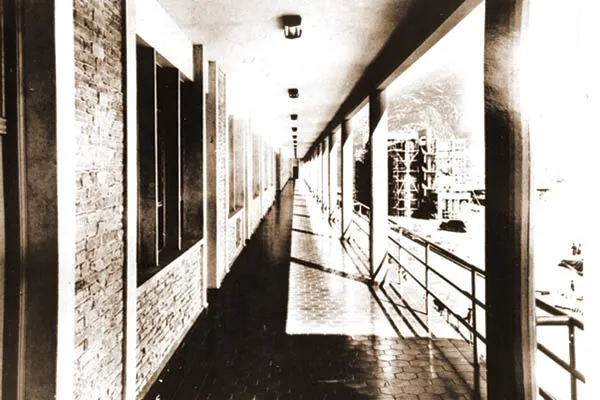
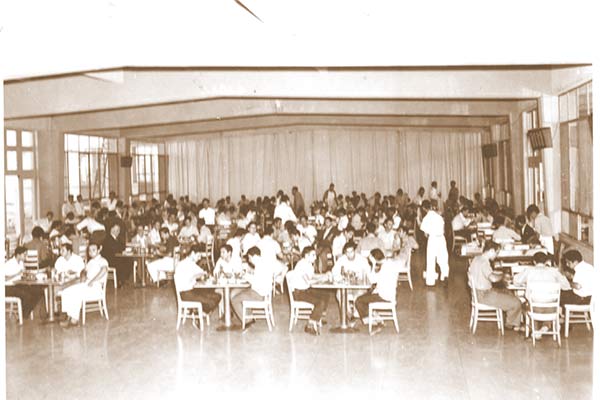
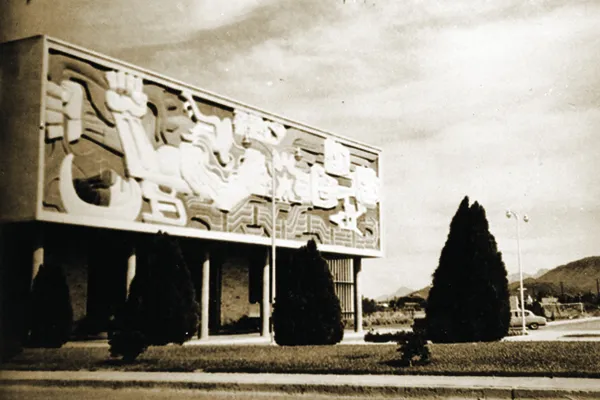
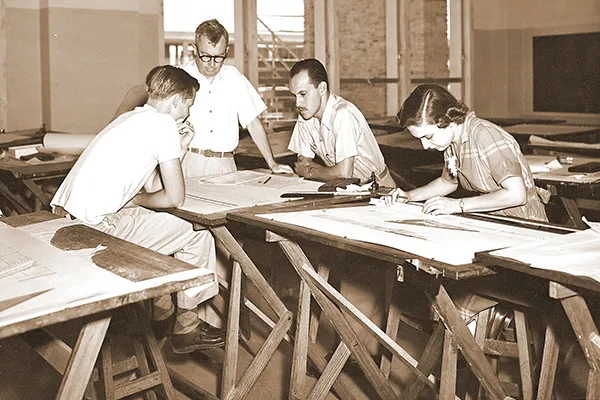
READ MORE:

